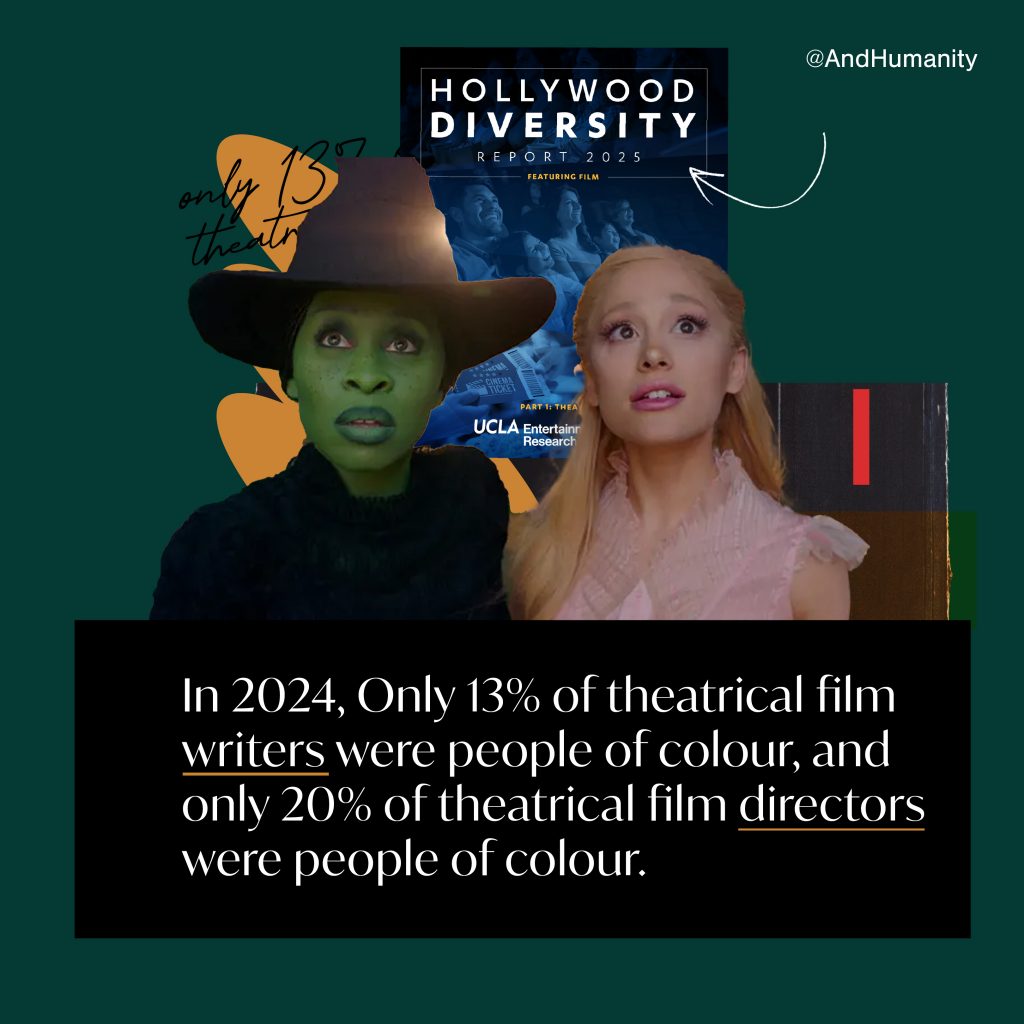As an inclusive marketing agency, we understand that authentic representation in media isn’t just a matter of fairness – it’s essential for connecting with today’s increasingly diverse and culturally competent audiences. That’s why the findings from UCLA’s 2025 Hollywood Diversity Report are especially concerning. Despite years of progress, the latest data shows a troubling reversal in on-screen and behind-the-scenes diversity, even as BIPOC moviegoers continue to drive box office success and express a clear preference for inclusive content. The industry’s backslide not only risks alienating its core audiences but also threatens the progress made toward a more equitable Hollywood. Here are some of the highlights from the report:
➡️ In 2024, films with the least racial/ethnic diverse casts more than doubled their share, while the films with the most racial/ethnic diverse casts cut their share in almost half
➡️ White people’s share of all theatrical film roles *increased* from 59.6 percent in 2023 to 67.2 percent in 2024
➡️ Even though BIPOC populations continue to trend upwards in the USA (and will become the majority within a couple of decades), BIPOC *still* lost ground relative to their White counterparts in *all* key Hollywood employment arenas in 2024
Further to this…
➡️ BIPOC moviegoers bought the majority of opening weekend, domestic tickets for seven of the top 10 films and 12 of the top 20 films released in theaters in 2024
➡️ And new evidence from 2024 continues to support findings from earlier reports in this series suggesting that America’s increasingly diverse audiences *prefer diverse content* in theatrical film releases.
However…
➡️ In 2024, BIPOC creatives lost ground in terms of leads, total roles, directors, and writers.
➡️ Only 1.3 out of 10 theatrical film writers are people of color
➡️ Only 2 out of 10 theatrical film directors are people of color
The only real improvement was with women…
➡️ On screen, women approached parity with men in lead roles and had the highest share (47.6 percent) recorded in this report series
➡️ However, i t should be noted that most of these female leads were white (71.4 percent), and more than half of these white female leads (51.4 percent) starred in a film with a budget that was less than $20 million.
All’s to say, the findings are quite grim. The report summarizes the situation the industry is in very well; “Rolling back diversity efforts now is not only damaging because of its financial consequences, but it halts visible progress that has just been made in the past decade. Industry stakeholders will need to choose the direction that will not only help the theatrical industry survive, but thrive for years to come.”
Download and read the full report here:
Learn more about what we do and who we do it for on our services page.
Sign up for our newsletter here for more insights on marketing, advertising, communications, and how the industry intersects with inclusion.









